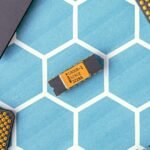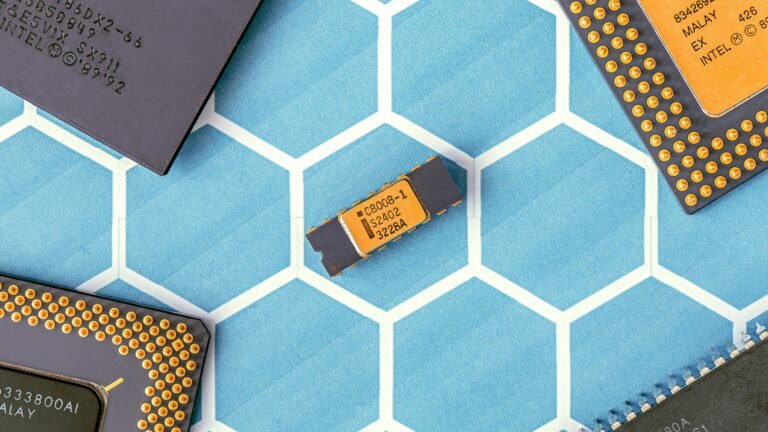The Chip Wars: How Eight Rebels Created the Digital Revolution While America Lost Its Mind
The untold story of how a California breakup in 1957 split the world of home computing into two warring tribes and changed everything while the country was coming apart at the seams
The year was 1957, and America was schizophrenic. Elvis was gyrating on The Ed Sullivan Show while suburban parents clutched their pearls. The Soviets had just launched Sputnik, sending the nation into a Cold War panic about falling behind in the space race. In Detroit, tail fins were getting bigger and chrome was getting shinier, but underneath the optimism, something was stirring a technological revolution that would be born from betrayal, nurtured by rebellion, and ultimately transform a generation of kids from passive TV watchers into digital natives.
Eight young engineers, fed up with their tyrannical boss, walked out on one of the most important men in Silicon Valley. They called themselves “The Traitorous Eight,” and their act of rebellion would eventually put a computer in every home, a Game Boy in every kid’s hands, and create the soundtrack to the end of the analog world.
This is the secret origin story of the great computer wars of the 1980s when your choice of home computer wasn’t just about specs and software, but about picking a side in a technological holy war that traced its roots back to a single company in California and a handful of renegade engineers who dared to dream of putting an entire brain on a chip while America was still trying to figure out what to do with television.
The Great Schism: Digital Tribes in Reagan’s America
By the early ’80s, America was trying to convince itself it was morning again. Ronald Reagan was in the White House promising a return to traditional values, but in suburban bedrooms across the country, kids were already living in the future. The home computer world had crystallized into two distinct tribes, each with their own sacred texts, devoted followers, and incompatible ways of thinking about what a computer should be.
On one side stood the Z80 believers the scrappy underdogs who swore by machines like the Sinclair ZX Spectrum, Amstrad CPC, and MSX. These were the punk rockers of computing, the DIY ethic made silicon. While MTV was launching with “Video Killed the Radio Star,” Z80 kids were programming their own music on machines that looked like they’d been assembled in someone’s garage (which, in many cases, they had been). These computers embodied the post-punk aesthetic: stripped down, functional, and defiantly anti-corporate.
On the other side were the 6502 disciples the Americans who pledged allegiance to the Apple II, Commodore 64, and Atari 800. These were the populists, the democratizers, powered by a chip so affordable it transformed computing from an elite pursuit into a living room revolution. While Reagan talked about trickle-down economics, the 6502 was actually doing it bringing computational power that once required million-dollar mainframes down to the price of a decent stereo system.
The cultural divide ran deeper than mere technical specifications. Z80 kids grew up in the shadow of economic recession and nuclear anxiety, finding solace in machines that demanded you understand their inner workings. Every program was a negotiation with limited memory, every game a masterclass in creative constraint. They were the generation that came of age during the Iranian hostage crisis and the energy crisis, and their computers reflected that scrappy, make-do mentality.
6502 kids lived in Reagan’s America optimistic, consumer-driven, and convinced that technology would solve everything. Their computers came with sleek cases, professional software, and the promise that you didn’t need to be an engineer to join the digital revolution. The Commodore 64 commercials featuring William Shatner weren’t selling computers; they were selling the American Dream with a keyboard attached.
The Original Sin: Betrayal in the Age of Organization Men
The story begins in 1957, when America still believed in the corporate ladder and the company man. The Man in the Gray Flannel Suit was the cultural touchstone, IBM was synonymous with computing, and conformity was considered a virtue. But in California, something different was brewing.
William Shockley Nobel Prize winner, co-inventor of the transistor, and by most accounts a paranoid, racist megalomaniac—was running his semiconductor company like a personal fiefdom. Shockley Semiconductor should have been the Google of its era, but Shockley’s management style made Mad Men‘s Don Draper look like a sensitivity trainer.
Eight of his brightest engineers had enough. Robert Noyce, Gordon Moore, and six others staged the most consequential walkout in tech history, leaving to found Fairchild Semiconductor. It was a very 1950s kind of rebellion polite, organized, and dressed in narrow ties and white shirts. Shockley was furious, dismissing them as “The Traitorous Eight.” History would remember them as the founding fathers of Silicon Valley.
But this wasn’t just corporate drama it was a generational shift happening across American culture. The same year The Traitorous Eight walked out, Jack Kerouac published On the Road, and teenagers were discovering that Elvis could make them feel things their parents didn’t understand. The rigid corporate hierarchies that had won World War II were beginning to crack, and nowhere was this more evident than in the emerging world of electronics.
At Fairchild, these rebels invented the planar process a way to etch hundreds of transistors onto a single silicon wafer. While the rest of America was obsessing over bigger cars and bigger TVs, these engineers were thinking smaller, denser, more elegant. They were creating the integrated circuit, the holy grail that would make everything from pocket calculators to moon rockets possible. But like all great rock bands, Fairchild was destined to break up, spawning dozens of Silicon Valley startups in what became known as “Fairchildren.”
Intel: Mainstreaming the Revolution in the Psychedelic Era
In 1968—the year of assassinations, riots, and The White Album two of the original “traitors,” Robert Noyce and Gordon Moore, left Fairchild to start their own company. They called it Intel, and initially focused on memory chips. But the cultural zeitgeist was shifting toward radical experimentation, and even buttoned-up Silicon Valley couldn’t escape the influence of the counterculture brewing just across the bay in San Francisco.
Enter Federico Faggin, a young Italian engineer who looked like he could have played guitar for Jefferson Airplane. When a Japanese company called Busicom requested a set of chips for a scientific calculator, Faggin had a revolutionary thought that embodied the era’s “think different” mentality: what if we put the entire processing unit on a single chip?
The result was the Intel 4004, born in 1971 the world’s first microprocessor. A computer brain the size of a fingernail that arrived just as America was beginning to question everything it thought it knew about technology, authority, and the future. While Nixon was bombing Cambodia and students were occupying campuses, engineers in Silicon Valley were creating something that would ultimately prove more revolutionary than any protest: they were making computing personal.
The cultural implications were staggering. For the first time in history, individuals could own the same computational power that had previously been the exclusive domain of corporations and governments. It was democratization through technology a very American kind of revolution, accomplished not through manifestos and barricades, but through mass production and market forces.
Zilog: The Punk Rock Processor in the Me Decade
By the mid-’70s, America was exhausted. Watergate had ended the Nixon presidency, Vietnam was finally over, and the country was ready to turn inward. But Federico Faggin, like many brilliant artists, felt creatively stifled at Intel. The company was making money on memory chips and didn’t seem to grasp the revolutionary potential of microprocessors. In 1974 the same year Nixon resigned Faggin pulled his own version of The Traitorous Eight maneuver, leaving Intel to found Zilog.
It was perfect timing. The punk movement was just beginning to emerge from the ruins of the hippie dream, and Faggin’s Z80 processor embodied that same stripped-down, DIY aesthetic. The Z80 was compatible with Intel’s 8080 but faster, smarter, and cheaper. It was the Ramones to Intel’s corporate rock: three chords and the truth, delivered with maximum efficiency and minimum bullshit.
The Z80 became the beating heart of a generation of home computers that reflected the economic anxieties and cultural fragmentation of the late ’70s. The Sinclair ZX Spectrum brought computing to British bedrooms during Margaret Thatcher’s recession. The MSX standard unified Japanese and European machines while America was losing its manufacturing dominance. Even Nintendo’s Game Boy, the bestselling handheld console of all time, relied on the Z80’s descendants proving that sometimes the most revolutionary technologies come disguised as toys.
These computers weren’t sleek consumer appliances; they were tools for tinkerers, hackers, and bedroom programmers who understood that the future belonged to those who could code their own reality. While disco ruled the airwaves and cocaine fueled Wall Street, Z80 kids were creating their own culture in phosphor green and white, one line of BASIC at a time.
The 6502: The People’s Processor Meets Morning in America
Meanwhile, another rebellion was brewing one that would define computing for a generation of Americans who grew up believing that technology was their birthright. At Motorola, a group of engineers led by Chuck Peddle thought the company’s 6800 processor was too expensive for regular people. They pulled their own disappearing act, leaving to found MOS Technology with a mission that could have been lifted from a campaign speech: build a processor that didn’t cost a fortune.
The result was the 6502 a chip that sold for $25 when its competitors cost $300. It was the Model T Ford of microprocessors, designed not for engineers in lab coats but for kids in their bedrooms. And it arrived just as America was ready to embrace personal technology as the solution to everything from education to entertainment to economic anxiety.
Steve Wozniak, a long-haired dropout building computers in his garage, chose the 6502 for something he called the Apple II. The machine launched in 1977, the same year Star Wars convinced America that the future could be fun again. The Apple II wasn’t just a computer; it was a lifestyle statement, a declaration that technology could be both powerful and approachable, both revolutionary and user-friendly.
Jack Tramiel, the Auschwitz survivor who ran Commodore like a benevolent dictator, built his PET around the 6502 and later used it in the Commodore 64 the bestselling home computer of all time. The C64 launched in 1982, just as MTV was hitting its stride and personal computers were transitioning from hobbyist curiosities to mass-market phenomena.
Atari stuffed the 6502 into game consoles that would define a generation’s relationship with electronic entertainment. While parents worried about arcade violence and “Pac-Man fever,” their kids were learning that computers could be more than tools they could be portals to infinite worlds, limited only by imagination and programming skill.
The 6502 didn’t just make computers affordable it made them democratic. For the first time in history, a teenager with a few hundred dollars could own a machine as powerful as anything in a corporate office. It was technological populism, American-style: anyone could join the revolution, as long as they could scrape together the cash.
The Culture Wars: Tribes of the Electronic Frontier
By the 1980s, the battle lines were drawn, and they reflected the broader cultural and economic divisions fracturing American society. On one side were the Z80 kids the digital punk rockers who grew up debugging assembly code on their Spectrums, creating demo scenes and bedroom masterpieces on machines with names like “Colour Computer” and “Dragon.” They were the indie rockers of computing, the art school dropouts who found creative workarounds for hardware limitations and turned constraints into features.
These were the kids who came of age during the Reagan recession, who understood that resources were limited and every byte mattered. Their computers crashed regularly, their programs loaded from cassette tapes that sometimes ate themselves, and their graphics looked like abstract art created by a drunk robot. But they were their programs, their graphics, their digital worlds created from scratch.
6502 kids lived in a different universe entirely Reagan’s America of endless possibility and conspicuous consumption. They had the Apple II, with its beautiful color graphics and professional software that actually worked out of the box. They had the Commodore 64, with its legendary SID sound chip that could make music no other machine could match a full synthesizer on a chip that enabled bedroom producers to create electronic symphonies years before anyone had heard of techno or house music.
The cultural divide went deeper than technology. Z80 culture was fundamentally European and Japanese introspective, experimental, focused on pushing limited hardware to its absolute limits. Demo scenes emerged from this world, creating computer art that treated programming as performance and the machine as an instrument. These were the digital descendants of the avant-garde, creating beauty from binary.
6502 culture was aggressively American optimistic, commercial, and convinced that technology would democratize everything from education to creativity. The Apple II wasn’t just sold to hobbyists; it was marketed to schools, businesses, and families as the key to participating in the information age. Commodore’s advertising promised that their computers would make your kids smarter, your business more efficient, and your entertainment more engaging.
The two tribes spoke different programming languages (Z80 assembly versus 6502 assembly), used incompatible software, and rarely mixed. You were either a Z80 person or a 6502 person, and that choice said something fundamental about how you saw technology, creativity, and the future. It was the geek equivalent of punk versus new wave, indie versus mainstream, art house versus blockbuster.
Electronic Music: The Soundtrack to the Silicon Revolution
But perhaps nowhere was the cultural impact of these competing chip architectures more evident than in the explosion of electronic music that accompanied the home computer revolution. The same teenagers who were learning to program were also discovering that their computers could make sounds no acoustic instrument could produce.
The Commodore 64’s SID chip became legendary among electronic music pioneers. Artists like Rob Hubbard and Martin Galway created chiptune masterpieces that influenced everyone from Kraftwerk to the future creators of acid house and techno. The SID’s distinctive sound those gritty, metallic tones that could somehow be both robotic and soulful became the unofficial soundtrack of the 1980s digital underground.
Meanwhile, Z80-based machines were spawning their own electronic music scenes. The ZX Spectrum’s simple beeper could only produce rudimentary sounds, but that didn’t stop bedroom musicians from creating entire symphonies using clever programming tricks. The limitations forced creativity if you wanted polyphonic music from a machine that could only play one note at a time, you had to rapidly switch between frequencies fast enough to fool the human ear.
This was happening at the same time that electronic music was exploding in clubs and on the radio. Giorgio Moroder was creating the disco-to-synth-pop bridge with tracks like “I Feel Love.” Gary Numan was proving that synthesizers could be simultaneously futuristic and emotional. Kraftwerk was demonstrating that humans and machines could create something neither could achieve alone.
The home computer revolution and the electronic music revolution were really the same revolution—a generation of kids discovering that they could create their own entertainment, their own art, their own culture using these mysterious electronic boxes that their parents didn’t understand. Every kid with a Commodore 64 was potentially the next Jean-Michel Jarre. Every bedroom programmer with a ZX Spectrum was potentially the next pioneer of what would eventually become techno, house, and every electronic music genre that followed.
The Hidden Truth: One Revolution, Many Faces
But here’s the secret that makes this whole story so beautifully absurd, and so perfectly American: both warring tribes descended from the same eight rebels who walked out of Shockley Semiconductor in 1957. The Z80 traced its lineage directly back to Fairchild through Intel and Faggin’s rebellion. The 6502 seemed like a completely different family tree, but even it grew from Fairchild soil Motorola had hired away Fairchild engineers to build its semiconductor division, and Chuck Peddle himself had learned his craft at Fairchild before moving to Motorola.
In the end, the great computer wars of the 1980s weren’t really about different philosophies or competing visions. They were about the inevitable fragmentation that happens when brilliant people can’t stop having brilliant ideas—and can’t stand working for anyone else. It was the technological equivalent of rock and roll’s endless splits and reunions, with each new band claiming to be more authentic than their predecessors while secretly borrowing their best riffs.
The Traitorous Eight didn’t just betray William Shockley in 1957. They betrayed the entire post-war consensus about how innovation was supposed to happen in big corporations with clear hierarchies, five-year plans, and research departments staffed by men in white coats. They proved that the future belongs to the rebels, the dropouts, the garage tinkerers who think they can build something better than their bosses ever imagined.
And they were right, in ways they couldn’t have predicted. Every smartphone, every laptop, every gaming console, every electronic music instrument can trace its ancestry back to that moment in 1957 when eight engineers decided they’d had enough and walked out the door. The chips may have been different, the computers may have been incompatible, and the fan wars may have been vicious but they all grew from the same rebellious seed.
The Revolution Continues: From Silicon Valley to Your Pocket
Today, as we carry more computational power in our pockets than the Apollo program used to reach the moon, it’s easy to forget how radical and uncertain this all seemed at the time. In the 1980s, personal computers weren’t inevitable they were experimental. Electronic music wasn’t mainstream it was weird. The idea that kids would grow up to be more comfortable with keyboards than typewriters seemed absurd.
But the rebels won. The kids who grew up programming their own games became the adults who built the internet. The bedroom musicians who squeezed symphonies out of sound chips became the producers who defined electronic dance music. The hackers who reverse-engineered copy protection became the entrepreneurs who built Silicon Valley’s second and third waves.
The revolution they started isn’t over. It’s just moved to new battlegrounds, with new tribes fighting new wars over new technologies. iOS versus Android. Intel versus ARM. Spotify versus Apple Music. The same tribal instincts that once divided Z80 kids from 6502 kids now separate different ecosystems of digital life.
But the lesson remains the same: the future belongs to the traitors, the rebels, and the dreamers who think they can fit an entire world onto a chip the size of a fingernail. In a culture that celebrates conformity and punishes failure, they keep proving that sometimes the best way to honor your teachers is to become the kind of rebel that would make them proud.
And somehow, impossibly, in defiance of every management consultant and corporate strategist, they keep being right. The future keeps arriving not in boardrooms and research labs, but in garages and bedrooms and spare rooms where someone decides that the way things are isn’t good enough and that maybe, just maybe, they can build something better.
The music is still playing. The code is still being written. The revolution continues, one chip at a time.








